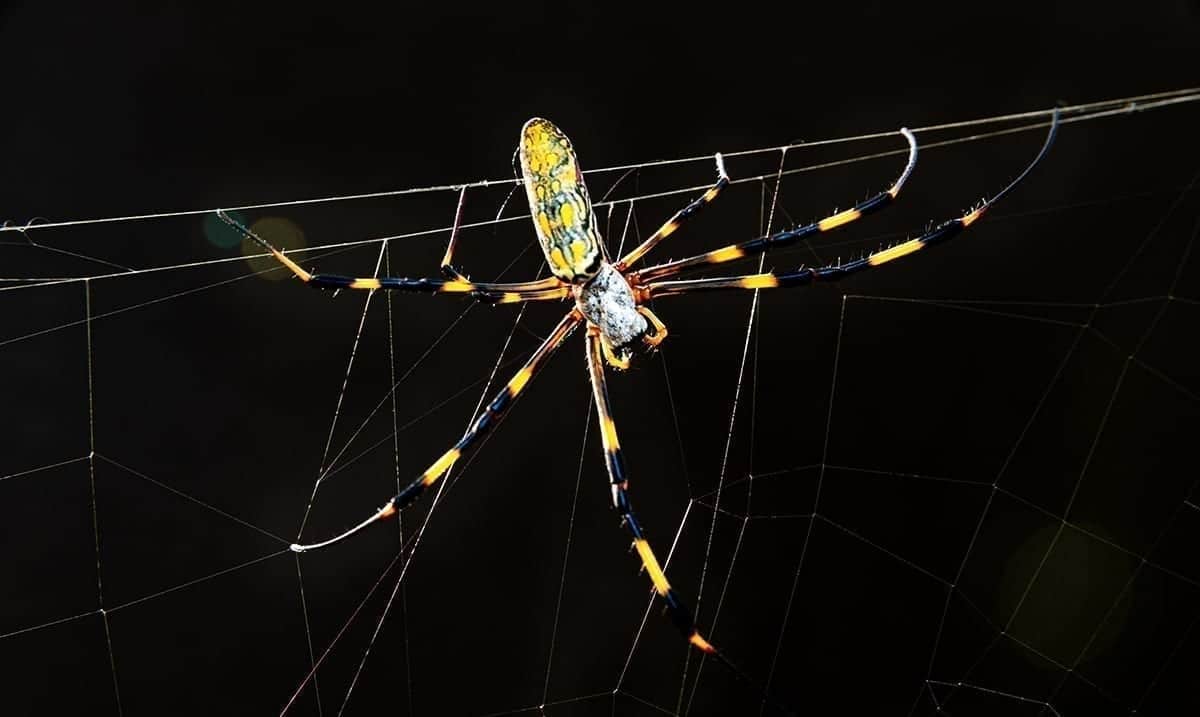While not many people realize this, species that do not necessarily belong where you are can sometimes be found. For instance, in Georgia, the East Asian Joro spider has really been the subject of a decent bit of research.
When you think of Georgia chances are you don’t expect to find a Joro spider but apparently, it is possible, and they are present in the state. Their presence was first noted back in 2014-2015 and from there they’ve been quite researched. Joro spiders belong to a group of spiders known as ‘Golden orb weavers’ and they make some of the most beautiful webs you will ever see.
If you’ve ever seen a ‘garden spider’ or a ‘banana spider’ then you have somewhat of an idea of how this specific spider looks as it to me looks like a mixture of the two in appearance but is quite captivating. It’s huge and scary to some but there is no denying its beauty as well. While not native here, it has really made a home in Georgia, or so it seems.
Back in 2019 Biology students studied this spider and its presence in Georgia. For several months Dr. Mattias Johasson and some of his students from UNG went out and captured all the Joro spiders they could find over the course of several months. From there these researchers were able to study the spiders and really better understand them and their presence in Georgia. While we might not be certain about how they got there, we do need to know what kind of impact their presence may hold.
They are all over my yard 😫
This is what they turn into😵#JoroSpider pic.twitter.com/paiizOaBxX— Mecha Maiden 🦇 (@MechaMaiden) August 10, 2018
UNG wrote as follows on this project:
Helping Johansson with the research are Cole, Lupica, Natalee Dula, Kelsey Hart, and Jordan Manalad. Cole and Lupica, who are both from Milton, Georgia, have spent part of the 2019 fall semester traversing Tumbling Creek Woods and Chicopee Woods Nature Preserve to find and capture Joro spiders. On Cole’s first venture into the woods, she caught between 40 and 50 spiders.
“That was before Gabby and I knew that we needed only 25-35 spiders in one location,” Cole said.
Catching the spiders is relatively simple. The students use a Tupperware or plastic container with a lid to trap the live spider. Then they record its location with a GPS. Next, they drop the spider into a jar of ethanol to kill it. Finally, they remove the spider with tweezers and place it in a vial with a specific number and its GPS coordinates. They repeat the process several times.
The pair have collected more than 100 spiders from the woods and nature preserve near UNG’s Gainesville Campus. Now, they are enlisting citizen scientists to find and locate Joro spiders in the community.
The faculty-student research team crafted a poster asking for nature enthusiasts’ help and displayed it at Elachee Nature Science Center. It asks community members who spot the spiders to document it by taking a photo of the spider and emailing it and the location to [email protected].
“The Joro spider is big and obvious,” Johansson said. “And they have a unique web because it is yellow and multilayered.”
What’s next in 2020? How about giant spiders in north Georgia?
Oh great, we’re doomed. Thanks a lot 2020. #spiders #jorospider #giantspider #creepy https://t.co/OAW91Uderq— Ej Brad And Kai (@EJBradAndKai) October 6, 2020
From there this group has also gone out and searched for egg sacks as well, according to UNG. It is thought that these spiders may be competing with local wildlife and perhaps causing the native spiders a bit of trouble. That being said it could also be giving other local species a new food source. While even now we still don’t know much, in time we may better understand these spiders and their newfound place in Georgia’s ecosystem.
The more we learn the better off we will be. This because if we do need to work to get their numbers under control, it is something we can do. What do you think about all of this? I for one think this is truly fascinating and I’d rather hear about these spiders than those nasty murder hornets.

